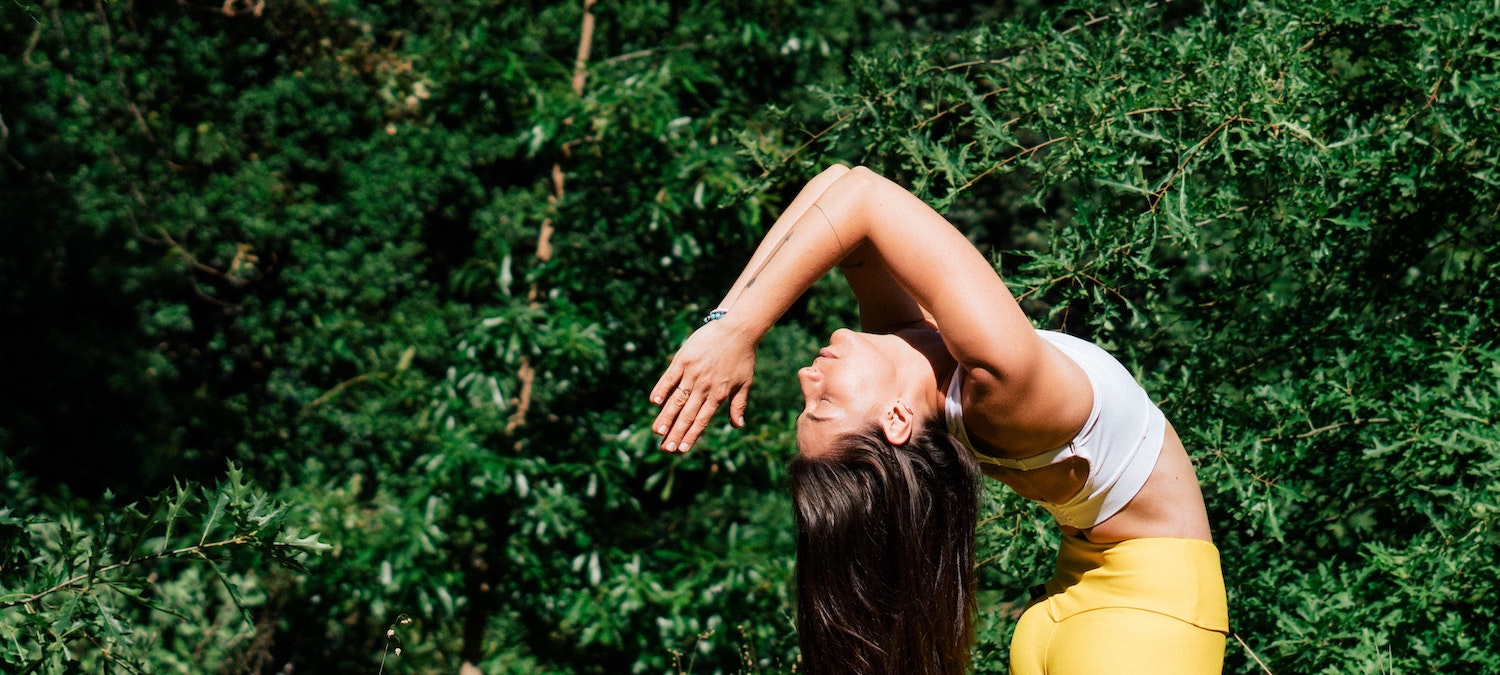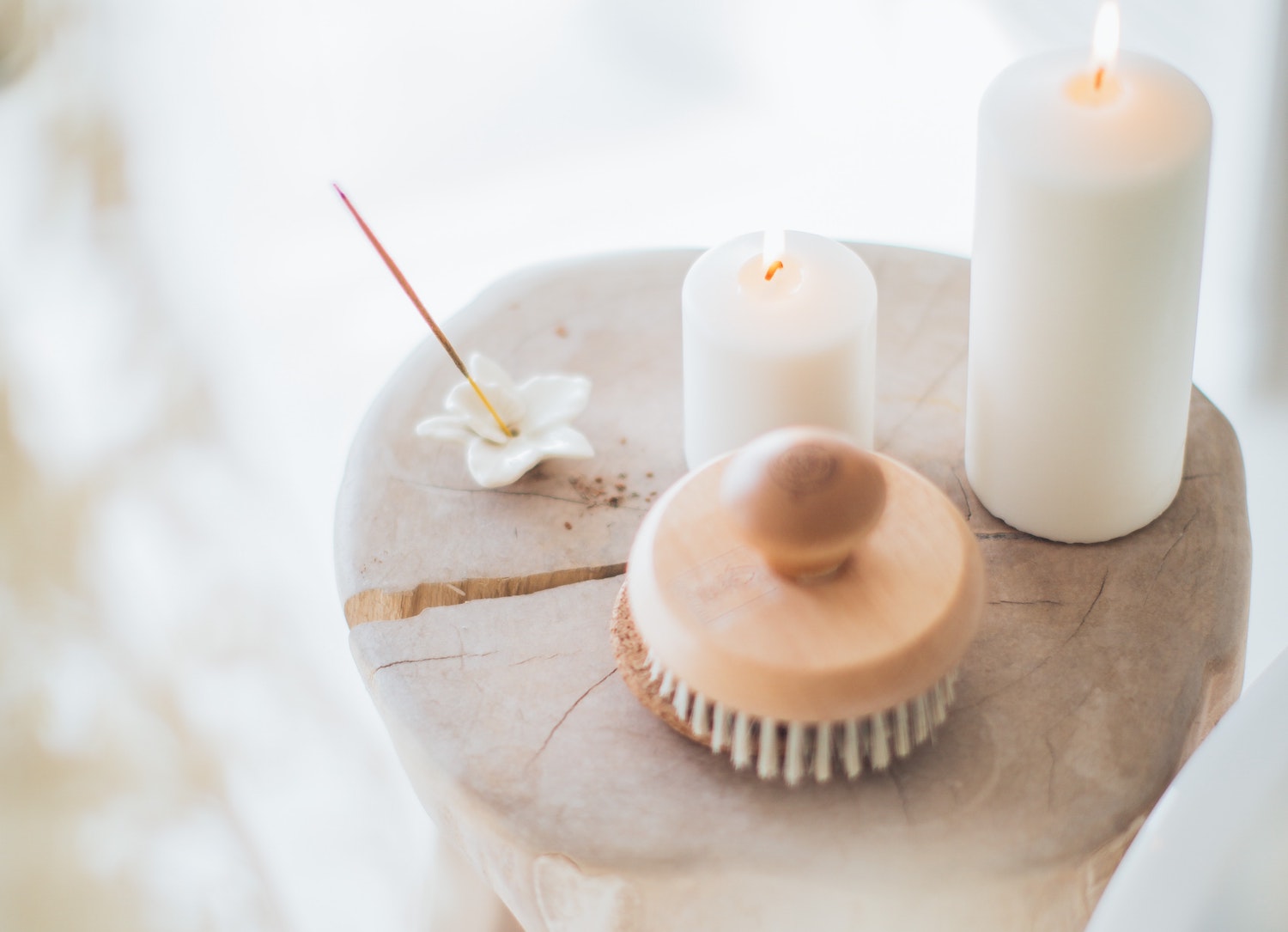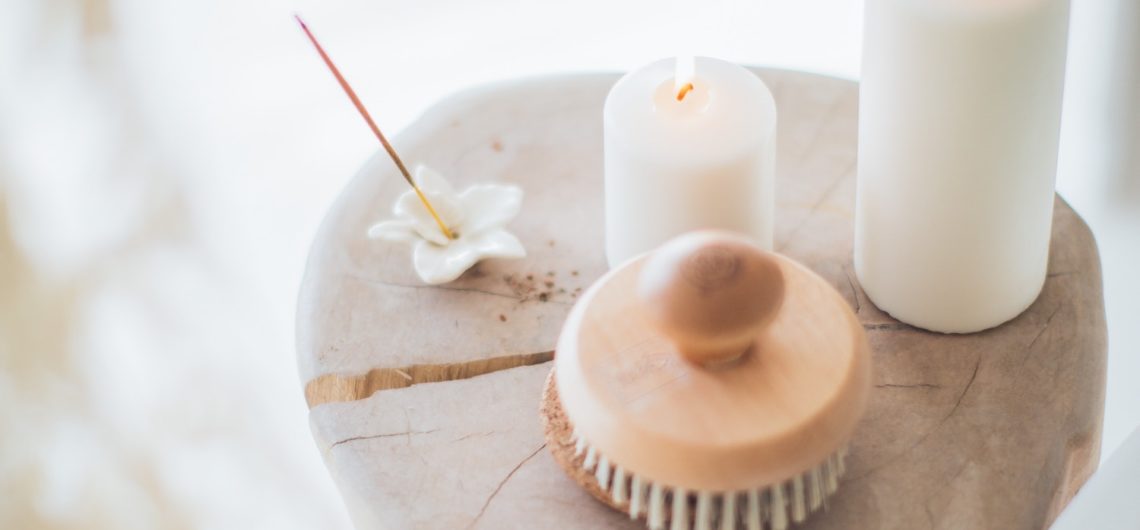
Self-care is critical to optimal health and well-being, and it’s one of the lessons that many of us have learned from the coronavirus pandemic. But how is self-care defined, and what distinguishes self-care from self-indulgence? This question has been on my mind for months.
For many people, self-care evokes images of a relaxing spa, a luxurious vacation, or being in a beautiful retreat setting. For me, though, self-care is a disciplined, daily practice that keeps me anchored, grounded, and connected to my heart. On the other hand, self-indulgence is an expression of privilege and can reinforce egoism, vanity, and gluttony.
My Personal Self-Care Routine
Almost every day, I wake up before sunrise to do some asanas, meditate, and reflect on my day before I eat, shower, and turn on my computer. Some days my practice feels mundane; other days, it is profound and blissful. Most days, it is simply an act of coming home to myself and to the present realities of my life.
This relationship between self-care and self-indulgence is so akin to my relationship with chocolate. I LOVE chocolate—dark chocolate of all varieties: dark chocolate and ginger, dark chocolate and orange, dark chocolate with figs. I don’t think I have ever met dark chocolate I didn’t like.
Dark chocolate is a sweet indulgence that gives me a momentary buzz of pleasure and sensuality. However, if I indulge in it too much, I notice sugar cravings and the beginnings of an insatiable appetite for sugary foods that inevitably leads me down the path toward consuming unhealthy carbs and bread, which make me feel lethargic, foggy, and hungry. However, in the right amount, a chocolate indulgence can add a sweet pleasure.
Self-indulgent experiences like facials, spa treatments, or luxurious holidays can be a step toward creating a self-care routine. But if there is no continuity in the form of a self-care home practice, the experience wears out, and we find ourselves hungry for nourishment.

One December, many years ago, my husband and I decided to attend a 10-day silent meditation retreat. I had no experience with meditation or doing a retreat, and I had no idea what to expect. The retreat involved eight hours of sitting meditation punctuated with silent walking, dharma talks, and mealtimes. The retreat was excruciatingly painful both physically and mentally, and yet profoundly insightful. Never before had I come face-to-face with my own thoughts. With nothing to do but meditate, I experienced the restlessness of my monkey mind, and I practiced a method to feel anchored in stability, focus, and present moment awareness. I experienced incredible lucidity, had profound insights about my life and noticed an increased vividness in sight, sound, and taste.
I came home excited about practicing this meditation technique, but after a few weeks, the habit of getting up early and meditating was no longer sustainable. Seeking more of what I experienced, I became a self-improvement junkie, going to workshops, seminars, and retreats hoping to re-establish a meditation practice and to experience the insights I had on my first meditation retreat. I would come home excited to practice meditation again and feel inspired by what I had learned. But inevitably, after a few weeks, my meditation practice would lose steam, and I would find myself disappointed and looking for the next course.
This pattern continued for many years until I met my Guru, Sri Paramhans Swami Maheshwarananda. I received from him both inspiration and guidance in establishing a home practice or sadhana. Sadhana is the Sanskrit word for daily spiritual practice. Establishing a daily home practice has given me so much over the years. It is a daily anchor for me to nourish my body with movement. It is a moment for me to cleanse my mind and choose kind, loving, peaceful, and harmonious thoughts. And my daily practice allows me to connect with my heart and the deepest part of my being.
Practicing Self-Care Throughout The Day
In addition to a morning practice that nourishes me on all levels, I try to cultivate space in my day to rest, breathe, and reflect—whether that’s a guided yoga nidra or writing in my gratitude journal. I cook and eat nourishing meals to provide my body with the right kind of fuel. I choose my words carefully and mindfully, whether in emails or in speaking, so that my words and language do not create harm and division and instead contribute to harmony and peace.
While I appreciate spa dates, aesthetic treatments like facials, and getting my hair done, self-care is not as simple as getting a massage or facial, not to mention the economic privilege embedded in spa holidays, beauty treatments, and getting your hair and nails done weekly. On the contrary: true self-care requires discipline and commitment and is rooted in the foundation of self-esteem.
Self-Connected To The Whole
Self-care is an expression of self-esteem: valuing our body, our mind, our time, and our energy while committing to practices and habits that nourish us. Movement practices (yoga, Qi Gong, Tai chi, exercise), breathing practices, and meditation practices all restore our physical, emotional, energetic, and spiritual resources. Inherent to these practices is an understanding that the self is connected to the whole. To bring ourselves into balance and harmony is a blessing not only for ourselves but to all those around us.
In some Eastern spiritual lineages, this is expressed in the dedication that follows a practice—a dedication that the fruits of our practice radiate outward and benefit all beings in all realms. Lokah samastha sukhino bhavantu. May all beings, in all realms, experience happiness. This is the mantra I repeat at the end of my practice.
If you are overworked, exhausted, and always giving to others, a spa date can offer time to oneself. Undoubtedly, this is a rare and precious gift. The real gift is not the service but rather the time, space, and reversal of roles.
 If you are overworked, exhausted, and always giving to others, a spa date can offer time to oneself.
If you are overworked, exhausted, and always giving to others, a spa date can offer time to oneself.
If you are used to being the giver, it can be incredibly healing to be on the receiving end, whether it is receiving a massage, a nourishing meal, or simply receiving someone’s full attention and presence. For people who work in a service-oriented profession, receiving is a crucial part of staying balanced. In fact, receiving and giving are both expressions of the natural flow of life energy. For most women who are habituated and conditioned to give, receiving nourishment from another can be a gift unlike any other.
Massage and other types of bodywork can also be an important addition to a committed home practice. There is no substitute for the healing power of touch and the feeling of an experienced practitioner who can untie the knots in our muscles and fascia, help us recover from injuries, and remind the body of what health feels like.
In contrast, self-indulgent activities offer a temporary pleasure that is limited to ourselves. A luxurious holiday is great but may benefit just us, whereas a meditation practice that grounds us in calmness benefits us, our partners, our children, our family, and our community.
Internal Vs. External
Health has both internal and external components. Attending to the internal is such an important part of self-care. This is another difference between what distinguishes self-care from self-indulgence.
Self-care practices are generally internally-oriented. Pratyahar, the drawing of the sense organs inward, is an essential limb of yoga and is the difference between exercise and asana.
Asana involves an internal component wherein our awareness is directed inward and not exclusively outward. Self-indulgent activities are, in general, exclusively outward and can be appearance-oriented. Grooming and tending to our appearance is important, but it is not the same as awareness, consciousness, and mindfulness, all of which include internalization of our life-energy. Having our nails done and getting a great haircut may contribute to feeling beautiful, but it is no substitute for genuine self-esteem, which comes from within. Valuing our qualities, our beauty, skills, and assets creates a radiance that can’t be captured in a face full of makeup.
 Valuing our qualities, our beauty, skills, and assets creates a radiance that can’t be captured in a face full of makeup.
Valuing our qualities, our beauty, skills, and assets creates a radiance that can’t be captured in a face full of makeup.
While advertising likes to convince us otherwise, beauty products are just products. Beauty does not come from a bottle of foundation; it comes from an inner glow and radiance. Often this radiance is the result of years of inner work and transformation. This is the third difference between self-care and self-indulgence. Self-care practices are ultimately about transformation.
Pleasure Vs. Transformation
Self-care practices like yoga, meditation, and conscious breathing promise transformation. I can attest to this truth. Yoga has given me physical health and has transformed me from the inside out. This transformation is the marvel and miracle of spiritual practice that opens us up to a greater potential inside that is beyond what we’ve been taught to believe about ourselves.
As we shed the layers of our past and subconscious beliefs that we have inherited, we are able to live with intention, clarity, and purpose. When our actions are rooted in ethics and integrity, we are able to transform everyday experiences into opportunities for personal and spiritual growth. This takes dedication and consistent effort. Transformation rarely comes without discomfort.
In contrast, self-indulgent activities are pleasurable. And, when the pleasure ends, we are exactly where we started. Self-care practices take us on an inner journey that challenges, changes, and transforms who we are from the inside out.
Inner Resources
Finally, self-care taps into our inner resources: our ability to regulate our emotions, shift brain states, and move our prana from our heads to our hearts. Deep breathing triggers the relaxation response and can help shift us from a gamma brain state into an alpha or deep relaxation brain state. The ability to shift our brain waves into a slower rhythm can help us access our intuition, wisdom, and creativity.
Self-indulgent activities may help us feel relaxed, but they do not provide the tools to access relaxation on our own. Yoga conditions the body physically, mentally, and emotionally, impacting not only the muscles, joints, and tissues but also the nervous system, glands, and brain. The keys to cultivating different states of consciousness like deep relaxation, unconditional love, and healing at the subconscious level are all part of self-care practices like yoga and meditation.
Here are a few of the self-care practices that I use regularly to help me tap into my inner resources and cultivate a sense of inner calm and peace:
Self-Care Morning Practice
Before you begin your day, make a nourishing drink, sit down, and take time to pause and reflect.
Instructions: Ask the question, what can I do today to nourish me physically, emotionally, energetically, and spiritually? Choose one thing from your answer and commit to scheduling it into your day.
 Ask: what can I do today to nourish me physically, emotionally, energetically, and spiritually? / Photo by Thom Holmes
Ask: what can I do today to nourish me physically, emotionally, energetically, and spiritually? / Photo by Thom Holmes
Self-Care Mid-Day Check-In
In the middle of your day, take a 10-minute time-out to pause and be still. In the summertime, I like to sit outside, feel the warm sunshine on my skin, and let my mind wander while I stay attentive to my breath. When the weather is cold, I make a cup of tea and sit on my living room couch, and gaze out the window.
Instructions: Find a comfortable place to sit. Notice your sitz bones and feel yourself settling into your body. Feel rooted and connected to the Earth beneath you. Feel your core and the stability of your pelvis and spine. Notice the inhale and exhale of your breath and the movement of breath in the abdomen. Relax your back muscles and feel a sense of lifting through the spine. Soften the muscles in your face. Settle into your heart and be attentive to whatever arises. Let your breath anchor you in the present moment. Be attentive to where your mind wanders and what you feel emotionally and energetically.
Self-Care Nightly Practice
Many years ago, I learned a practice to help unwind at the end of the day, to integrate and process all the experiences of my day, and to prepare for sleep.
Instructions: As you lie down, notice your breath. Allow your breathing to slow down so that you feel relaxed. Count 10 slow breaths, allowing for a pause between each breath. Once you feel relaxed and at ease, recall to your mind the last activity of your day and work through your day backwards until you reach the moment of waking up. Notice the feelings and thoughts that arise. Keep coming back to the thread of working backwards through your day until the moment of waking up in the morning.
These practices can help you establish a self-care routine that feeds you on all levels. The key is to do them regularly!
While I love to book spa dates with my girlfriend and indulge in luxurious meals, self-care rituals, and practices like yoga and meditation nourish me in ways that chocolate and facials can’t. Eating chocolate gives me a fleeting moment of pleasure, while eating a nourishing, wholesome meal provides me with fuel throughout my day.
A daily consistent practice is like a nourishing meal. My practice nourishes me on all levels and provides me with a stable, consistent source of energy. Each day that I choose it, it nourishes me. It reminds me of the words of Yogi Babi Hari Dass, “If you work on yoga, your yoga will work on you.”
 Farah Nazarali is a yoga-junkie. She has deep love and passion for all things yoga- asana, mantra, kirtan, nidra, satsang, and the Sutras. When she’s not on the mat, she’s creating videos, producing podcasts, or conducting karmic experiments using the currency of love. She lives with one foot firmly in the digital realm and the other foot rooted in Nature, natural rhythms, and the unlimited potential within the human heart.
Farah Nazarali is a yoga-junkie. She has deep love and passion for all things yoga- asana, mantra, kirtan, nidra, satsang, and the Sutras. When she’s not on the mat, she’s creating videos, producing podcasts, or conducting karmic experiments using the currency of love. She lives with one foot firmly in the digital realm and the other foot rooted in Nature, natural rhythms, and the unlimited potential within the human heart.

